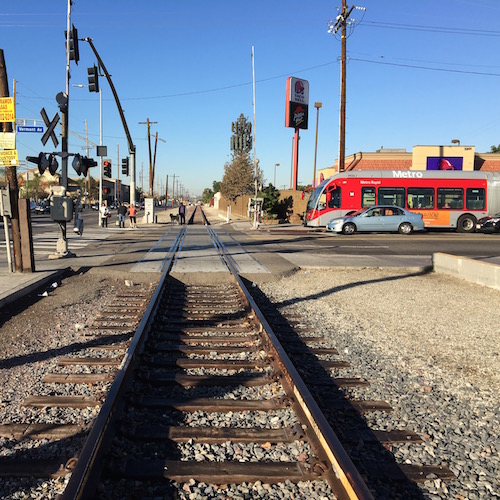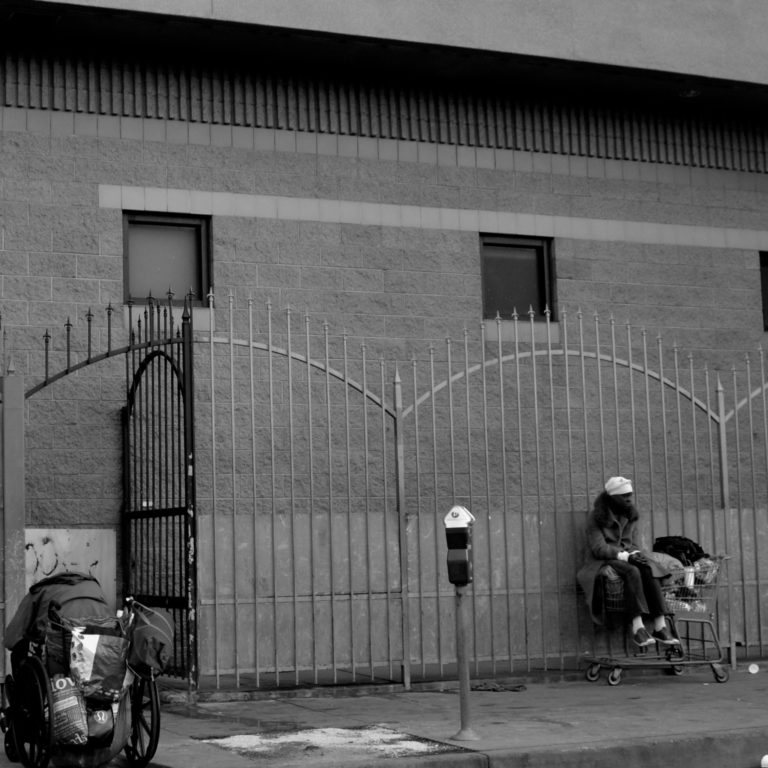Los Angeles Gentrification Compounds Problems For A Neighborhood Alreadly Struggling
The uptick of people living on the streets in Vermont Harbor is a growing concern for residents and business owners.
As a boy growing up in Boston, Bob Wolf never imagined he would be homeless. He used to dream of becoming an architect and raising three kids with a loving wife. But after he dropped out of high school and began to struggle with alcoholism, that dream seemed to fade away. Now, 60, Wolf instead finds himself without a family, unemployed, and living on a mattress near a noisy street corner by the Vermont Harbor Library. In the six years Wolf has been homeless, he has moved from street to street in different areas of the city. While Wolf used to spend most of his time in Skid Row, he’s been staying in Vermont Harbor the majority of the time recently.
“Over here is the only place people will leave me alone,” Wolf said. “All I want is some peace and quiet and you can’t get that anymore in downtown or anywhere else for that matter.”
Wolf is part of a growing problem in Vermont Harbor. While new buildings and construction projects are springing up across the city, Vermont Harbor has largely remained unchanged. Although rent prices in the neighborhood continue to rise with the rest of Los Angeles, there hasn’t been a major construction project in the Vermont Harbor in over 20 years and it’s created a haven for L.A.’s homeless population. A 2015 study by the Los Angeles Homeless Services Authority found more than 350 people are living on the streets in Vermont Harbor, a 12 percent increase from the year before. USC Professor of Sociology and Public Policy Ann Owens sees this increase as a direct result of gentrification in other parts of the city.
“Downtown Los Angeles has historically been an area where the cities homeless have congregated,” Owens said. “But the rapid change we’re seeing in places like downtown and Koreatown are confining a growing homeless population to an even smaller living space. That’s forcing many of the homeless to expand into low-income neighborhoods where they traditionally would not venture.”
This expansion seems to be fueled by a relaxed attitude from law enforcement in Vermont Harbor. As the cost of living in downtown has increased rapidly, so has the presence of law enforcement. A 2016 study by The Los Angeles Times found a recent increase in the amount of public intoxication tickets issued downtown. What’s more, the downtown division of LAPD has begun to crackdown on encampments in streets outside of Skid Row. Any tent set up must be packed up before six a.m. or is subject to fines. In Vermont Harbor, that’s not the case. Although Wolf ‘s had few problems with the police in his time living on the streets, he says it doesn’t hurt to stay under the radar.
What it's like to own a business in Vermont Harbor
“Back when I was sleeping in Skid Row, the police would never leave no one alone,” Wolf said. “I would follow the rules but a lot of people I know would get in trouble for little things. The cops are always trying to ticket people who have nothing in the first place. Over here though, I don’t have to deal with all that. They leave me alone.”
Although the relaxed restrictions on the homeless in Vermont Harbor gives many living on the streets peace of mind, it comes at a cost to the broader neighborhood. Many residents are concerned about the increase of homeless people in the community and see it as part of the reason the cities gentrification boom has bypassed the area. Thianne Garrett works at the Vermont Harbor Library and has lived in the neighborhood for over 10 years. She regularly attends a monthly community meeting where residents have voiced their concerns of the number of people living on the streets.
“People are concerned with the homeless population because it’s growing a lot and they’re concerned for their safety- it’s an eyesore in the neighborhood that we really don’t want,” Garrett said. “It’s also holding us back from a lot of the changes happening in the rest of the city. We can’t get developers or any new businesses interested in moving into the neighborhood when the streets are filled with people sleeping on the sidewalks and full of trash. That’s not good for business.”
The rising homeless population in Vermont Harbor has made things more difficult for a community that is already struggling to keep pace with the rest of the city. The significant homeless population makes it harder for the neighborhood to reap some of the benefits gentrification provides. For now, rents and the cost of living continue to increase even though little has changed in the neighborhood. While Wolf says he’s happier living away from Skid Row, he doesn’t want to be homeless and feels more can be done to help those in need.
“There are way too many people living on the streets in this city and the system needs to change,” Wolf said. “It sucks that I’m homeless. I can’t really blame anybody, but it just hurts that I ended up like this.”
This map shows the the most up to date information on the location of homeless individuals living in Vermont Harbor. The map was compiled from information provided by the Los Angeles Homeless Services Authority.

